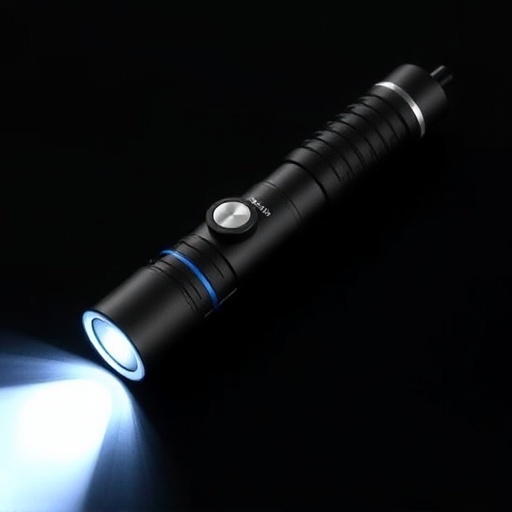The Push Button Expandable Baton is a versatile, compact self-defense tool that enhances training for law enforcement and civilians alike by enabling dynamic scenario practice. To maximize its effectiveness, design realistic training scenarios with diverse threats and environments, focusing on quick deployment and adaptation to various opponents. Regular practice in controlled settings improves reaction time and precision, while post-training analysis through debriefing and video review refines techniques, ensuring confident and effective use in real situations.
In today’s diverse and dynamic world, scenario training with a push button expandable baton offers a versatile tool for self-defense preparation. This comprehensive guide delves into the art of designing and executing realistic defense scenarios using this compact weapon. From understanding the unique mechanics of the push button expandable baton to post-training analysis, each section equips readers with strategies to enhance their skills and stay ready for any situation. Master these techniques and elevate your self-defense game with this versatile tool.
- Understanding the Push Button Expandable Baton: A Tool for Scenario Training
- Designing Effective Collapsible Baton Defense Scenarios
- Implementing and Executing the Training Protocol
- Post-Training Analysis and Improvement Strategies
Understanding the Push Button Expandable Baton: A Tool for Scenario Training
The Push Button Expandable Baton is a versatile tool that significantly enhances scenario training for self-defense and law enforcement simulations. Its unique design allows for compact storage, making it easy to carry and deploy when needed. With just a simple push of a button, this baton can quickly extend from a small, manageable size to a formidable defensive weapon, providing users with an advantage in various training scenarios.
This innovative feature enables trainees to practice rapid response tactics, crucial for real-world situations where every second counts. Scenario training becomes more dynamic and realistic as practitioners learn to master the baton’s expansion, offering them a practical experience that translates directly to improved performance under pressure. The push button mechanism also adds a layer of versatility, allowing for different grip styles and tactical applications during training sessions.
Designing Effective Collapsible Baton Defense Scenarios
When designing scenarios for training with a push button expandable baton, it’s crucial to create realistic and diverse situations that challenge users’ skills and decision-making. Scenarios should simulate real-world applications, covering various threats and environments. For instance, start with basic self-defense against muggers in urban settings, then progress to more complex scenarios like crowd control during protests or securing a perimeter in remote areas. Incorporate different attack patterns and distances to familiarize trainees with versatile defense tactics.
Ensure each scenario has clear objectives, allowing participants to practice deploying the baton effectively under pressure. Varying the level of resistance offered by attackers helps build adaptability. Include scenarios where multiple opponents engage simultaneously to simulate real-life high-stress situations. Regularly updating training scenarios keeps them engaging and relevant, reflecting evolving tactical needs.
Implementing and Executing the Training Protocol
Implementing and executing the training protocol for collapsible baton defense requires a structured approach. Start by familiarizing yourself with the push button expandable baton, understanding its mechanics, and practicing smooth deployment. Positioning and grip are key; train to extend the baton quickly and firmly, targeting critical points for maximum effectiveness.
During training sessions, simulate various scenarios to enhance reactivity. Practice against different opponents, adapting your technique as needed. Regularly review safety protocols to ensure responsible usage. Consistent practice in controlled environments will prepare you for real-world situations, making every movement intuitive and precise when drawing and deploying the push button expandable baton.
Post-Training Analysis and Improvement Strategies
Post-training analysis is a crucial step in improving any self-defense scenario, especially with collapsible baton training. After each session, instructors and participants should reflect on the exercises performed. This involves reviewing the techniques learned, their effectiveness, and areas where improvements are needed. For instance, observing how quickly participants extended or retracted their push-button expandable batons during simulated attacks can highlight any delays in reaction time, prompting a focus on speed and agility in subsequent sessions.
To enhance learning, instructors can encourage debriefing sessions where trainees share their experiences, discuss challenges faced, and propose solutions. This collaborative approach allows for the collective improvement of skills. Additionally, reviewing training videos or demonstrations can help individuals refine their movements and form, ensuring they execute each technique with precision and power. Regularly incorporating these analysis strategies into the training regimen will ultimately lead to more skilled and confident self-defense practitioners, ready to deploy their collapsible batons effectively in real-world scenarios.
The push button expandable baton is a versatile tool that significantly enhances scenario training for self-defense and law enforcement. By designing well-structured scenarios, implementing effective training protocols, and analyzing post-training performance, individuals can master the art of using collapsible batons in various real-world situations. This comprehensive guide offers practical insights to optimize training outcomes, ensuring professionals are prepared to handle dynamic threats with confidence and precision.
